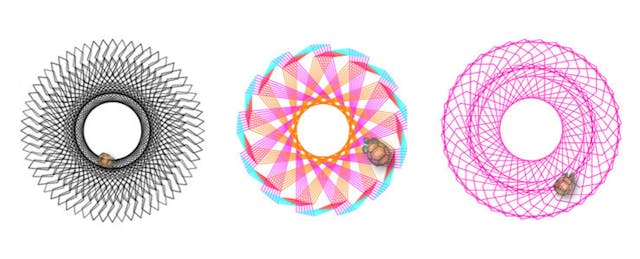Soon after I wrote my last article on Edsurge “Where Does Tech-ed Belong in Edtech?,” advocating for the need for computer science education, there was a surprising amount of activity in this area--from President Obama’s interview to the much talked about Code.org video. The timing of my article was purely coincidence, though I wish I could say otherwise!
Now that we are warming up to the idea that we must teach computer science or programming or “coding” in our schools, the next question is “Where do you start?”
The advocacy channels and computer science organizations (CSTA, NCWIT, CSEdWeek, Code.org) give a number of helpful links to curriculum guides, tools, online programming courses and much more. However, the number of programming resources can be overwhelming and the question still remains--where do you start?
I decided to look for a starting point based on what I have seen work again and again in my programming classes. Over the last four years, I have taught coding to hundreds of girls and boys in 4th to 6th grades across a total of nine different schools. I have taught required programming classes where everyone must learn coding, not just those who choose a programming elective. I have also taught in afterschool programs and to students with different socioeconomic backgrounds. In each class, the projects are modified and customized to meet the needs of my students. Going through my notebooks full of teaching reflections as well as my hundreds of student surveys, I tried to find that one perfect first project, that one perfect starting point.
While searching for this answer, I realized that it was actually obvious. We should start from the very beginning. Yes, historically speaking, start from the very beginning of the use of computers in education. Start from the the earliest extensive research done on teaching programming to children, to the father of edtech, to the genius behind it all--Seymour Papert. Papert’s work comes up in anything I do or write because even after all these years, he showed us why kids must program better than anyone else--not to mention he also said it first.
Papert’s first year-long programming class was in 1969 with seventh graders using his Logo programming language to control a turtle (both a physical robotic turtle and one on a screen). Papert wrote about his work in his 1980 book, Mindstorms: Children, Computers, and Powerful Ideas, starting a revolution in the use of computers in schools and inspiring projects like Lego Mindstorms. Papert showed us how kids learn programming, math, and most importantly, a way to learn about learning itself.
So to answer the question ‘Where do you start?’, I suggest starting with what Papert used--Logo. I recommend using any version of Logo (there are many to choose from) or doing a Logo-like project with your chosen programming tool. I have done this in my classes and it works. My students are engaged and excited when they are controlling a turtle on the screen--the magic described in Mindstorms by Papert still works more than 40 years later. Kids are, after all, the same.
As a first programming lesson, I have used the very well-designed ACS Logo on the Macs. I have also used MIT’s Scratch (using the Scratch cat and pen commands) and now more recently Tynker (using their turtle image and built in lesson plan). In each case, my students were caught up with their first coding experience, giving commands to draw patterns on the screen. Here is a link to some of my student’s first programs in ACSLogo, in Scratch and also in Tynker.
Teachers, administrators, parents and students--you can start coding with Logo right now. You do not need any prior programming expertise, you do not need to download software, and you do not need to create an account. Just go on over to turtleacademy.com and type in ‘forward 50’ (do not put in the quotes!).
Go on...go type:
forward 50
...
Did the turtle move?
Do you want to make him turn now?
Do you want to make a pretty pattern? Have him draw a house?
(Warning--coding can be addictive.)
Now that you know where to start, it just may be difficult to stop.
P.S: I picked turtleacademy as I was writing this article. Not sure why I did not suggest something a lot more in the news but I liked turtleacademy. It does not have anything about the number of students served, the press or the venture funding behind it. The small amount of documentation tells me that they just want to be able to give kids a free programming lesson in Logo that works in the browser. Their turtle understands English, Spanish, Hebrew, and Chinese and it works well. Once you are done with this coding platform and want something more, or maybe something that works better in your class, go on and try the other programming tools out there.They are just as much fun.
P.P.S: Before we had all this nice prepackaged software that we give our students today, those who went to a computer class actually did learn some programming. It was not a “keyboarding” class or a PowerPoint class or a Google Docs class, it was a “make your computer do anything” class. It was a programming class--and often it was a Logo class!


